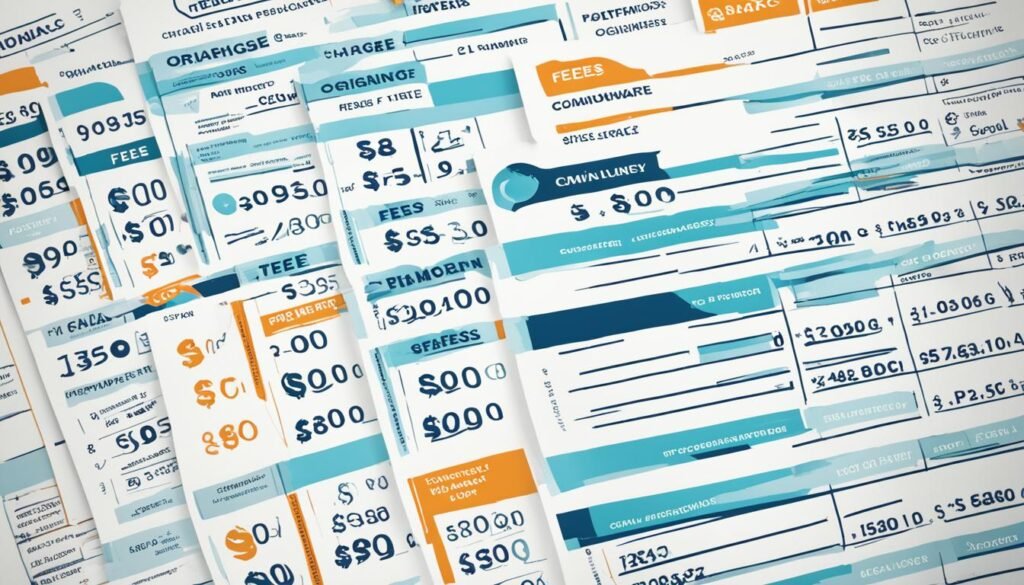Interpreting Interpret Loan Terms and conditions is a crucial step in the borrowing process. By understanding the key components of a loan agreement, borrowers can make informed decisions that align with their financial goals. This article will provide a comprehensive guide on how to interpret loan terms, including interest rates, repayment schedules, fees and charges, collateral requirements, and the 5 C’s of credit. Readers will learn how to evaluate their creditworthiness, negotiate better loan terms, and develop strategies for responsible borrowing and loan repayment. The goal is to empower borrowers with the knowledge and tools necessary to navigate the loan process and secure financing that best suits their needs.
Key Takeaways
- Understanding loan terms and conditions is crucial for making informed borrowing decisions.
- Interpreting key components like interest rates, repayment schedules, fees, and collateral requirements can help borrowers secure more favorable loan terms.
- Evaluating creditworthiness and the 5 C’s of credit can improve the chances of loan approval and better rates.
- Developing strategies for responsible borrowing and repayment can help borrowers avoid potential pitfalls and achieve their financial goals.
- Navigating the loan process with knowledge and tools empowers borrowers to make the best decisions for their unique financial situations.
Understanding the Importance of Loan Terms
Understanding the importance of loan terms is crucial for making informed borrowing decisions. Loan terms can have a significant impact on financial decisions, as they determine the overall cost of the loan, the repayment schedule, and the borrower’s obligations. By carefully interpreting loan terms, borrowers can align their borrowing with their financial goals, avoid potential pitfalls, and make better-informed decisions.
Impact of Loan Terms on Financial Decisions
Loan terms play a crucial role in shaping a borrower’s financial decisions. The interest rate, loan duration, and repayment schedule can significantly impact the overall cost of the loan and the borrower’s ability to manage their finances effectively. Carefully reviewing these factors can help borrowers determine the most suitable loan option that aligns with their budget and long-term financial objectives.
Consequences of Overlooking Loan Terms
Overlooking the details of loan terms can lead to unintended consequences, such as higher interest rates, unexpected fees, and difficulty meeting repayment obligations. Borrowers who fail to fully understand the terms and conditions of a loan may face challenges in managing their finances, potentially leading to late payments, damaged credit scores, and even default. By taking the time to interpret loan terms thoroughly, borrowers can avoid these potential pitfalls and make more informed decisions that support their financial well-being.
Key Components of a Loan Agreement
Understanding the key components of a loan agreement is crucial for borrowers to make informed financial decisions. The loan agreement is a legal contract that outlines the terms and conditions of the loan, including the interest rate, Annual Percentage Rate (APR), loan term, and repayment schedule. By familiarizing themselves with these critical elements, borrowers can better evaluate the overall cost of the loan and align their borrowing with their financial goals.
Interest Rate and APR Explained
The interest rate represents the cost of borrowing the loan and is typically expressed as a percentage. It is the primary factor that determines the monthly payments and the total amount the borrower will repay over the life of the loan. The Annual Percentage Rate (APR), on the other hand, includes additional fees and costs associated with the loan, providing a more comprehensive representation of the overall borrowing cost. By understanding the difference between the interest rate and APR, borrowers can make more informed decisions about the true cost of the loan.
Loan Term: Duration and Repayment Schedule
The loan term refers to the duration of the loan, which can range from a few months to several years, depending on the type of loan and the borrower’s needs. The repayment schedule outlines the frequency and amount of the monthly payments, which are determined by the loan term, interest rate, and loan amount. Longer loan terms may result in lower monthly payments, but the total interest paid over the life of the loan will be higher. Conversely, shorter loan terms can lead to higher monthly payments but lower overall interest costs. Evaluating the loan term and repayment schedule is essential for borrowers to understand the long-term financial implications of the loan.

Interpreting Fees and Charges
In addition to the interest rate and loan term, it’s crucial for borrowers to understand the various fees and charges associated with the loan. Origination fees and closing costs are upfront fees charged by the lender to cover the administrative expenses of processing the loan application. These fees can significantly impact the overall cost of the loan and should be carefully considered when evaluating loan options.
Origination Fees and Closing Costs
Origination fees are typically a percentage of the loan amount and can range from 1% to 5% or more, depending on the lender and the type of loan. Closing costs, on the other hand, are a collection of fees charged by various third parties involved in the loan process, such as appraisers, title companies, and government agencies. These costs can add up quickly, so it’s essential for borrowers to understand and factor them into their overall borrowing calculations.
Prepayment Penalties and Late Fees
Another important consideration is prepayment penalties and late fees. Prepayment penalties are charges imposed if the borrower pays off the loan ahead of schedule, while late fees are incurred for missing a scheduled monthly payment. These fees can have a significant impact on the terms and conditions of the loan and the borrower’s overall financial obligations. Carefully reviewing and interpreting these fees and charges can help borrowers anticipate the total cost of the loan and make more informed financial decisions.

Collateral and Security Requirements
Many loans, especially larger ones such as mortgages and business loans, require the borrower to provide collateral or security for the loan. Collateral refers to an asset, such as a property, vehicle, or equipment, that the lender can seize if the borrower fails to repay the loan. The value of the collateral must be sufficient to cover the loan amount, and the lender will assess its condition and marketability.
Also Read : Accelerate Your Auto Dreams: Unlocking Benefits with Auto Loan Pre-Approval
Understanding the collateral and security requirements is crucial, as they can impact the borrower’s ability to qualify for the loan and the overall terms and conditions. Borrowers should carefully review the credit report and credit history to ensure their creditworthiness aligns with the lender’s requirements for securing a loan.
For business owners seeking a line of credit or a small business loan, the lender may require collateral such as business assets, real estate, or personal assets to secure the loan. Homeowners applying for a mortgage will typically use the property they are purchasing as collateral for the home loan.
By understanding the collateral and security requirements, borrowers can make more informed decisions about the type of loan they can secure, the loan amount they can qualify for, and the monthly payments they can afford. This knowledge helps borrowers navigate the loan application process and negotiate better loan terms that align with their financial goals and ability to repay the loan.

Interpret Loan Terms
Interpreting loan terms involves understanding the key factors that lenders consider when evaluating a borrower’s creditworthiness. The “5 C’s of Credit” – character, capacity, capital, collateral, and conditions – are the primary criteria lenders use to assess the borrower’s ability to repay the loan.
Understanding the 5 C’s of Credit
The 5 C’s of Credit are critical for borrowers to comprehend, as they directly influence the loan terms and conditions they may qualify for. Character refers to the borrower’s reputation and history of repaying debts. Capacity looks at the borrower’s ability to generate sufficient income to cover the loan payments. Capital examines the borrower’s net worth and available assets. Collateral is the asset the borrower can provide as security for the loan. Finally, conditions consider the overall economic environment and the specific purpose of the loan.
Evaluating Your Creditworthiness
By evaluating their own creditworthiness, borrowers can better anticipate the loan terms they may qualify for and identify areas for improvement. This includes reviewing their credit report, understanding their credit score, and analyzing their financial situation to determine their capacity to repay the loan. With a clear understanding of their creditworthiness, borrowers can make more informed decisions and negotiate better loan terms that align with their financial goals.
FAQs
What are the key components of a loan agreement?
The key components of a loan agreement include the interest rate, APR, loan term, repayment schedule, fees and charges, and collateral or security requirements.
How do interest rate and APR differ?
The interest rate represents the cost of borrowing the loan, while the APR (Annual Percentage Rate) includes additional fees and costs, providing a more accurate reflection of the total cost of the loan.
What is the loan term, and how does it impact the repayment schedule?
The loan term refers to the duration of the loan, which determines the repayment schedule and the total cost of the loan over its life. The loan term and repayment schedule can significantly impact the monthly payments and the borrower’s ability to repay the loan.
What are origination fees and closing costs, and how do they affect the loan?
Origination fees and closing costs are upfront fees charged by the lender to cover the administrative expenses of processing the loan application. These fees can add to the overall cost of the loan and should be carefully considered when evaluating the total cost of borrowing.
What are prepayment penalties and late fees, and how can they impact the loan?
Prepayment penalties are charges imposed if the borrower pays off the loan ahead of schedule, while late fees are incurred for missing a scheduled payment. These fees can significantly impact the overall cost of the loan and should be factored into the borrower’s financial planning.
What is the role of collateral and security requirements in a loan agreement?
Many loans, especially larger ones such as mortgages and business loans, require the borrower to provide collateral or security for the loan. Collateral refers to an asset that the lender can seize if the borrower fails to repay the loan. Understanding the collateral and security requirements is crucial, as they can impact the borrower’s ability to qualify for the loan and the overall terms and conditions.
What are the 5 C’s of Credit, and how do they influence loan terms?
The “5 C’s of Credit” – character, capacity, capital, collateral, and conditions – are the primary criteria lenders use to assess a borrower’s creditworthiness and ability to repay the loan. Understanding these factors can help borrowers anticipate the loan terms they may qualify for and identify areas for improvement.
How can borrowers evaluate their creditworthiness?
Borrowers can evaluate their creditworthiness by reviewing their credit report, credit score, and other financial information to understand their overall credit profile. This assessment can help borrowers anticipate the loan terms they may qualify for and identify areas for improvement to secure better loan terms.




